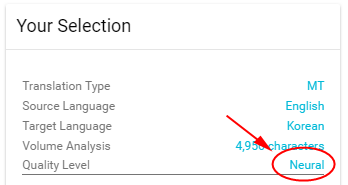Neural Machine Translation languages
WiseTranslate adopted Google Translate for machine translation. Google launched Neural Machine Translation system in Sept 2016. It was an important date in machine translation history. Google's Neural MT utilizes state-of-the-art deep-learning training techniques to achieve the largest improvements to date for machine translation quality. Refer to full article in Google Research Blog.
There're about 100 language pairs available, as of Jan 2018, for Neural MT.
English to/from
- Afrikaans, Albanian, Amharic, Arabic, Armenian, Azeerbaijani, Basque, Bengali, Bosnian, Bulgarian, Catalan, Cebuano, Chinese (Simplified), Chinese (Traditional), Corsican,, Croatian, Czech, Danish, Dutch, Esperanto, Estonian, Finnish, French, Frisian, Galician, Georgian, German, Greek, Gujarati, Haitian Creole, Hausa, Hawaiian, Hebrew, Hindi, Hmong, Hungarian, Icelandic, Igbo, Indonesian, Irish, Italian, Japanese, Javanese, Kannada, Kazakh, Khmer, Korean, Kurdish, Lao, Latvian, Lithuanian, Luxembourgish, Macedonian, Malagasy, Malay, Malayalam, Maltese**, Maori, Marathi, Mongolian, Nepali, Norwegian, Nyanja (Chichewa), Pashto, Persian, Polish, Portuguese (Portugal, Brazil), Punjabi, Romanian, Russian, Samoan, Scots Gaelic, Serbian, Sesotho, Shona, Sindhi, Sinhala (Sinhalese), Slovak, Slovenian, Somali, Spanish, Swahili, Swedish, Tagalog (Filipino), Tajik, Tamil, Telugu, Thai, Turkish, Ukrainian, Urdu, Uzbek, Vietnamese, Welsh, Xhosa, Yiddish, Yoruba, Zulu
For more information, please refer to Language Support for the Neural Machine Translation model on Google.
Other language pairs
Other language pairs such as Korean to Chinese are supported by base model, Phrase-Based Machine Translation. The old model is just base quality but covers all possible language pair combinations.
Base or Neural MT
When you translate your documents using machine translation at WiseTranslate.net, you'll be able to tell which model is applied as shown below.

